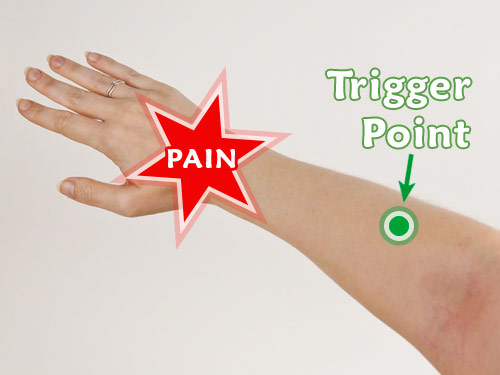Thank you all so much for your kind comments and well-wishes about my accident. Because of the concussion, my head has been hurting too much until now to spend more than a few minutes at a time on my computer or phone, so I haven’t replied to anyone individually (either here or on social) to […]

Archive for Category: General
I’m on sick leave
I had a bad fall the other day and smashed my head into a concrete sidewalk. I’ve fractured a front tooth and broken my glasses, and I have a concussion as well as cuts and bruises, a fat lip and a big lump on my head. It hurts my head to use the computer or […]
a new addition!

I’ve been dealing with a new batch of PTSD-related stuff for the last few weeks, since I was triggered by an incident in my neighbourhood. It’s exhausting to go from feeling pretty much okay to being thrust back into panic attacks and hypervigilance again. As a result of that, I started to more seriously consider […]
Reduce hand pain by releasing your trigger points

Hand and wrist pain is a common story for crocheters, knitters, and other crafters who spend a lot of time making repetitive motions with their hands. If you visit the doctor, you may be told you have carpal tunnel syndrome, tendinitis, arthritis, an RSI (repetitive strain injury), and that may be the case… or it […]
WIN a copy of Mandalas to Embroider!

Search Press, the publisher of Mandalas to Embroider: Kaleidoscope Stitching in a Hoop by Carina Envoldsen-Harris (the beautiful embroidery pattern book I reviewed last week) have kindly offered one PlanetJune reader the chance to win a free copy of this lovely book! If you’ve already picked up your copy, enter to win a copy to […]
back home in Canada!
December update

I’ve started a new hobby: setting up themed photos that cram in lots of my crochet designs for my Instagram account. It takes a while to set them up, but I’m really enjoying the results! Here’s my latest one, featuring over a dozen of my Christmas designs: A plethora of seasonal PlanetJune designs – find […]
October update

Autumn is my favourite season, and, even though it’s spring here in the southern hemisphere, I still think wistfully of beautiful fall colours and the first chill in the air whenever October rolls around. So I decided to spend some time putting together a little PlanetJune Fall photoshoot that perfectly captures the essence of autumn […]















